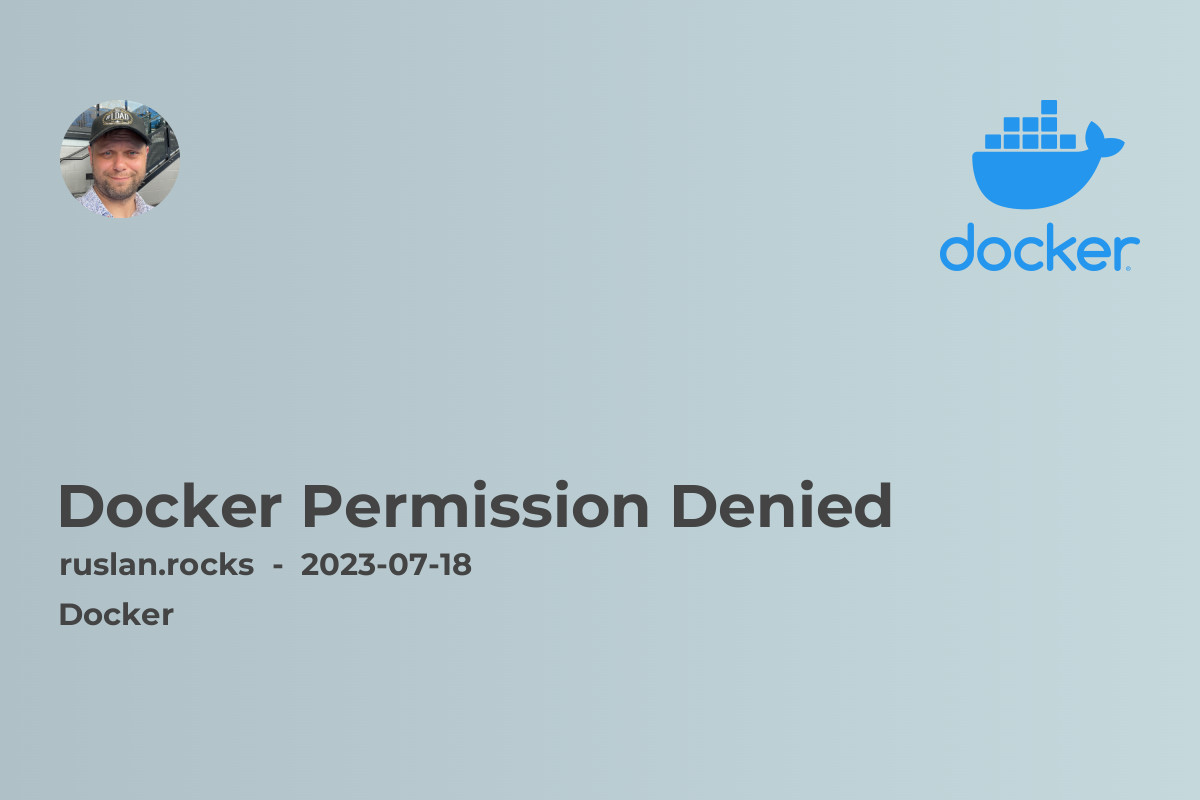- Understanding Docker Permissions
- Scenario 1: Accessing Host File System
- Scenario 2: Running Docker Commands as Non-Root User
- Scenario 3: File Ownership and Permissions
- Scenario 4: SELinux or AppArmor Restrictions
- Scenario 5: Inadequate Docker Resources
- Expanding Your Docker Knowledge

Have you ever encountered a "Permission Denied" error while working with Docker? If so, you're not alone. This frustrating error can occur for various reasons, making it challenging to pinpoint the exact cause. In this article, we will explore common scenarios that can lead to Docker permission issues and provide troubleshooting steps to help you resolve them. So, let's dive in!
Understanding Docker Permissions
Before we delve into the various scenarios that can cause permission denied errors in Docker, let's quickly understand Docker permissions. Docker Containers run as a specific user, typically the root user, within an isolated environment. This isolation allows containers to have their separate file systems and resources. However, it also means that any operation performed by a container is subject to the permissions and restrictions set within that environment.
Now, let's explore some common scenarios and solutions related to Docker permission denied errors:
Scenario 1: Accessing Host File System
When running a container, you may need to access files or directories from the host file system. However, by default, Docker isolates the container's file system from the host's file system. This isolation can result in permission denied errors when trying to access certain files or directories.
To resolve this issue, you can use Docker volumes to mount the required files or directories from the host to the container. By doing so, you grant necessary permissions to access those files and directories within the container. To learn more about Docker volumes and how to use them effectively, check out our article on Docker Volumes.
Scenario 2: Running Docker Commands as Non-Root User
By default, Docker commands are executed by the root user within the container. However, running containers as root can pose security risks. Hence, it's a best practice to run containers with non-root users. But running Docker commands as a non-root user may result in permission denied errors, especially when trying to perform privileged actions.
To overcome this issue, you can either escalate the permissions of the non-root user within the container or use the sudo command to execute privileged actions. If you're curious about the differences between running Docker commands as root or non-root, check out our article on Docker Security Best Practices.
Scenario 3: File Ownership and Permissions
Another common cause of permission denied errors in Docker is incorrect file ownership and permissions. If the files or directories used by a container have restrictive permissions or are owned by a different user, it can result in access errors.
To resolve this issue, ensure that the files and directories used by your container have the correct ownership and permissions. You can use the chown and chmod commands within your Dockerfile or in the container itself to modify the ownership and permissions of files. For a comprehensive guide on managing file permissions in Docker containers, refer to our article on Docker File Permissions.
Scenario 4: SELinux or AppArmor Restrictions
If you encounter permission denied errors even after granting appropriate file system permissions, you may need to consider SELinux or AppArmor restrictions. These security mechanisms can restrict the actions performed by containers and may cause permission issues.
To address this, you can either disable or modify the SELinux or AppArmor policies to allow necessary actions by the container. However, it's crucial to ensure that the modifications align with your security requirements.
Scenario 5: Inadequate Docker Resources
Insufficient resources allocated to Docker containers can also lead to permission denied errors. If a container doesn't have enough memory, CPU, or disk space to perform its tasks, it may result in unexpected behavior or errors.
To tackle this issue, ensure that you allocate sufficient resources to your Docker containers according to their requirements. You can adjust resource limits using Docker Compose or Docker CLI commands. For a comprehensive guide on managing Docker resources effectively, have a look at our article on Docker Resource Management.
Expanding Your Docker Knowledge
Docker permission denied errors can be frustrating, but with the troubleshooting steps outlined above, you can resolve most of the common issues. However, it's vital to continue expanding your knowledge of Docker and its related topics. Here are some articles that can help you further explore Docker and related concepts:
- Docker Volumes: Learn how to effectively manage data in Docker containers using volumes.
- Docker Security Best Practices: Discover essential security practices for Docker containers.
- Docker File Permissions: Dive into managing file permissions within Docker containers.
- Docker Resource Management: Learn how to efficiently manage resources in Docker containers.
By exploring these articles, you will enhance your Docker knowledge and be better equipped to handle various challenges that arise during containerization.
In conclusion, Docker permission denied errors can occur due to various factors, including file system access, user permissions, file ownership, security restrictions, and resource constraints. By following the troubleshooting steps outlined in this article, you can overcome these errors and ensure smooth operations with Docker. Remember to stay curious and continue learning about Docker and related technologies to unlock its full potential. Happy containerizing!
